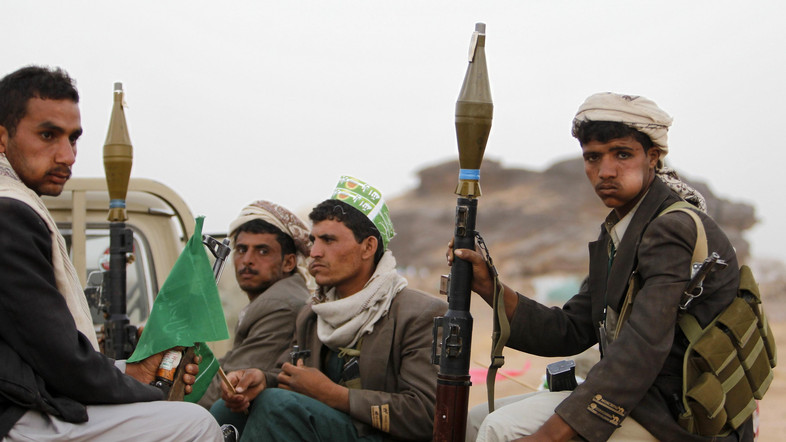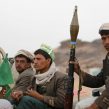
Yemen’s Southern Insurgency is Undermining the Political Transition
Publication: Terrorism Monitor Volume: 12 Issue: 5
By:

Yemen’s political transition reached a new turning point on February 10, when President Abd Rabbu Mansour Hadi formally approved the transformation of the country into a six region federal union (Yemen Times, February 10). The move was partially built on the recommendations promoted by the National Dialogue Conference (NDC), the year-long forum in which Yemeni political parties and factions were tasked with drawing a new political and administrative system for the country as the center-piece of the Yemen transitional mechanism. The new legislation is intended to divide Yemen into regions that reflect longstanding historical identities as well as to address the enduring grievances that still endanger its cohesion, especially the southern provinces’ request for greater autonomy, while preserving the country’s unity at the same time. The six regions solution, which was preferred to the other option on the table consisting of one northern region and one southern region, has nonetheless been highly contentious. The Yemeni Socialist Party (YSP – deeply rooted in the South), the Yemen Islamic Clerics Commission, the Salafist al-Rashad Party and the Houthi movement rejected the decision, although the YSP ended up signing the final document (Yemen Times, February 13; al-Tagheer [Aden], February 11). The strongest opposition to the federal system, however, came from the hard-line factions of the fractious Southern Movement (al-Harakat al-Janubiyya, also known as Hirak), which have opposed the political roadmap from its early stages, remaining inflexible in their call for a complete secession from the North (National Yemen, February 16; Aden Now, February 17).
Hirak is an amorphous umbrella group that includes several southern factions that generally agree on the need for greater autonomy for the South but differ on the shape of it and on the process to achieve it (see Terrorism Monitor, February 7, 2013). While the bulk of the Southern Movement remains committed to peaceful tactics and regular demonstrations in opposition to the central government, marginal segments of the movement started to adopt a more confrontational stance against the state two years ago, calling openly for secession. In 2011 and 2012, a number of low-profile incidents targeting security checkpoints and government buildings in Abyan and Aden were attributed to gunmen loosely affiliated with Hirak, although too often these episodes become indistinguishable from the attacks carried out by jihadist militants active in the area. From early 2013, however, a different trend began to materialize. Not only did a growing number of militant factions start to emerge and claim responsibility for their attacks, but this militant segment has also shown a strong intent to challenge the state’s authority in the South by mounting attacks and using tactics previously unseen in the past.
This low-intensity conflict currently has its main flashpoints in al-Daleh, Lahij, Abyan and Aden – the provinces that will constitute one of the two southern regions of the new administrative division – and Shabwa. The militant push gained traction last December, when a tank of the Army’s 33rd Brigade shelled a funeral tent in al-Daleh, killing 15 civilians (Yemen Today, December 27, 2013).
The funeral procession was mourning a Hirak activist killed when secessionists attempted to storm a governorate building to hoist the flag of the former South Yemen republic (al-Masdar Online, December 23, 2013). Although the 33rd Brigade said later that the attack was a mistake and the government opened a formal inquiry on the incident, the episode played well in southern characterizations of the Army as a “northern occupation force” (SabaNews [Sana’a], December 27, 2013; al-Sahwa [Aden], January 3). Rallies in support of people in al-Daleh quickly spread across many southern cities, while the chances of a non-violent settlement collapsed when troops from the 33rd Brigade opened fire on demonstrators in al-Daleh on December 28, 2013 killing two (al-Daleh News, December 28, 2013). Tensions escalated in al-Daleh throughout January as a militant faction called the “Armed Resistance in al-Daleh” took control of several government offices, stormed the security compound in the city and on two occasions ambushed Army units, kidnapping seven soldiers (al-Motamar, January 12; Yemen Today, January 25; Yemen Times, February 20). The group also attacked the Jarbhan Army base in the Sanah district of al-Daleh with mortar fire and RGPs and tried to target (without success) a government compound in al-Daleh city with a car bomb (al-Motamar, January 29; 26September.net, February 2). After a deadly February 18 confrontation in al-Daleh between security forces and Southern militants left 13 people dead and 30 injured, gunmen with RPGs ambushed an army convoy in Mafraq, killing six soldiers and kidnapping 12 others (SabaNews, February 18; Aden TV, February 19). Responsibility for the attack was claimed a few days later by a group called the “Southern National Resistance,” which threatened further attacks and called on the government to withdraw the 33rd Brigade from the province (Aden News Agency, February 20; Adenalghad.net, February 21).
Besides the ongoing violence in al-Daleh, which over the past two months has claimed dozens of lives on both sides of the fighting, clashes and attacks against security forces are also occurring on a weekly basis also in Shabwa, Aden, Abyan and Lahij. The seizure near al-Hawta (capital of Lahij governorate) of a large quantity of IEDs, detonators and landmines that, according to the army, belonged to Southern militants, represented a further indicator of the seriousness of the situation (Barakish.net, February 17). Attacks have not been limited to military targets; the “Southern Resistance in Shabwa” claimed responsibility for an assault on a security unit guarding a gas pipeline in Shabwa (Aden TV, February 21). However, the growth of armed separatist movements in many places in Southern Yemen calling themselves the “Southern Resistance,” represent the strongest display of this trend. Various accounts tie these movements to Ali Salem al-Beidh, the former general secretary of the Yemen Socialist Party and the strongest voice calling for secession within the Southern Movement (Akhbaralyom.net, January 24, Aden News Agency, February 2; Aden al-Ghad, February 4). His recent call for an armed struggle against the central government found the support of several of Hirak’s armed wings, most notably the Brigades of the Popular Resistance for the Liberation and the Independence of the South in al-Dalhe, Abyan, Aden and Shabwa (Akhbaralyom.net, January 24). Also close to al-Beidh is the National Front for the Liberation and Independence of the South, a new entity led by Shaykh Ahmad Bamuallim recently established in Lahij with the aim of coordinating the different southern factions (Aden Live TV, February 17).
While the gradual radicalization of segments of the Southern Movement might be partially a consequence of the questionable conduct of some Army Brigades in the South (especially in al-Daleh), the risk of an open southern insurgency against the central government is no longer a remote prospect. As the government will likely remain resolute in rejecting any Hirak request different from the six regions solution, tensions have the potential to worsen and even jeopardize the Yemeni political transition. The interplay in southern Yemen between demands for autonomy by local tribes and the security challenges posed by al-Qaeda in the Arabian Peninsula already constitutes an explosive mixture.
Ludovico Carlino is a Ph.D. Candidate in the Department of International Politics at the University of Reading, specializing in al-Qaeda and its affiliated movements.





